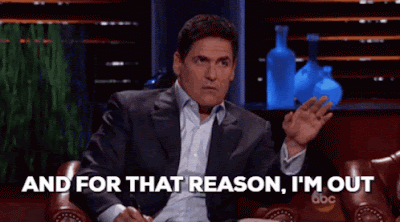Back in February, a presentation at Association for the Advancement of Artificial Intelligence conference proposed “PosterBot”: an artificial intelligence (AI) for making conference posters.
The authors, Xu and Wan, pitch automated poster making as a way to “save time.” They do this in three steps.
(W)e propose an automatic poster generation system which takes three steps, namely section filtering, content extraction, and poster composition.
First, they use an existing natural language AI to analyze the text.
Then, they analyze the figure captions to extract more text to determine where figure belong. They use the captions because the images are too abstract for AI to categorize.
Finally, they stick the extracted content into one of several pre-defined templates. They have both landscape and portrait formats. Here’s an example of a poster generated using the bot.
It might not win a competition for attractiveness, but it’s hardly the worst thing ever to hang in a poster session, either.
If I understand correctly, they treat poster creation as a matter of data compression. You have a whole bunch of text and figures, and the problem is cutting it down to the essentials. It’s true that many poster creators do put too much stuff of a poster.
So for PosterBot to work at all – never mind it bringing gains in efficiency – the entire project has to be already written up. Complete text. The whole enchilada.
In my experience, this is rarely the case. Posters are often the first time that people are bringing a project together. There is no text for an AI to select the best bits from because there is no text at all.
As they say on Shark Tank:
“For that reason, I’m out.’
PosterBot may be interesting to AI researchers, but it seems unlikely to be helpful to rank and file poster makers.
• • • • •
I had written everything above and had scheduled this post when, coincidentally, I stumbled across another paper that was trying to generate posters automatically (Jin et al. 2022). This one is called Text2Poster.
But both share the same general process: creating a poster by extracting information from a relatively complete set of text. For a typical poster maker, that is not going to be there.
Both projects are fascinating from an artificial intelligence perspective of “What can we make software do?”, but they are unlikely to be helpful to most conference poster creators.
• • • • •
And I had written everything above when I stumbled across a third paper (Lopes et al. 2022) about using artificial intelligence to design things. one is the furthers afield from academic conference posters.
EvoDesigner uses an “evolutionary” approach to spit out a series of suggestions that a human designer can work with. The works are measured by their “fitness,” and sent directly to Adobe InDesign.
This one is less relevant, but more interesting for a couple of reasons. One is that it “talks” directly with Adobe software, which is the existing industry standard for many. Second, it is a tool for idea generation, not final production creation.
That I stumbled across this series of papers in a matter of a couple of weeks shows that this is clearly going to be creating more options for conference poster creators going forward.
External links
Jin C, Xu H, Song R, Lu Z. 2022. Text2Poster: Laying out stylized texts on retrieved images. ICASSP 2022 - 2022 IEEE International Conference on Acoustics, Speech and Signal Processing (ICASSP). https://doi.org/10.1109/ICASSP43922.2022.9747465
Lopes D, Corriea J, Machado P. 2022. EvoDesigner: Towards aiding creativity in graphic design. Presented at Artificial Intelligence in Music, Sound, Art and Design – 11th International Conference, EvoMUSART 2022, Held as Part of EvoStar 2022, Madrid, Spain, April 20-22, 2022, Proceedings, 2022, pp. 162-178. http://dx.doi.org/10.1007/978-3-031-03789-4_11
Xu S, Wan X. 2022. PosterBot: A system for generating posters of scientific papers with neural models. https://www.aaai.org/AAAI22Papers/DEMO-00141-XuS.pdf (PDF)









1 comment:
It’s not correct that posters are never generated from complete papers. In the fields of Computer Science, AI, Computational Linguistics, Robotics and the like the “conference paper” is the standard and best regarded publication type. Full papers are submitted, peer review and published in the conference proceedings, which are usually considered archival. At the conference papers are either presented as talks or posters or, in some venues, both. So, in the fields of the papers cited in this post, posters based on full papers is actually quite a thing.
That being said, I agree that it’s probably not a good idea to autogenerate one’s poster by an AI and I would consider the cited papers merely as an interesting demonstration of the state of the NLP subfield called “summarization”.
Post a Comment